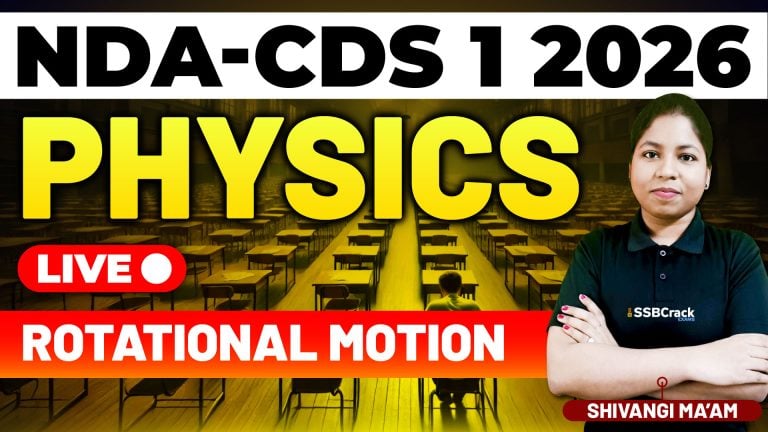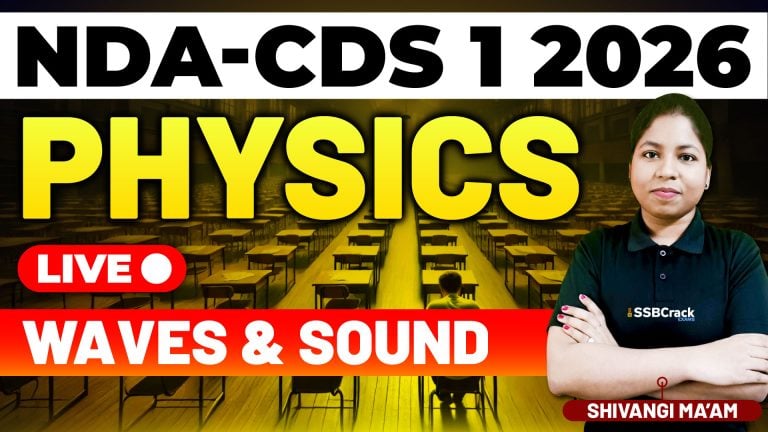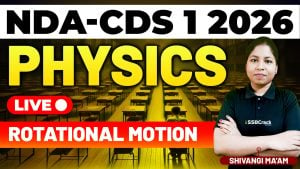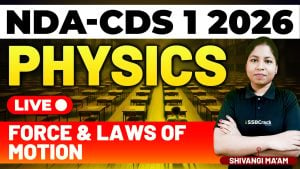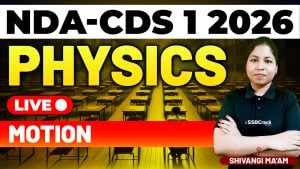Preparation for the NDA (National Defence Academy) and CDS (Combined Defence Services) exams requires a comprehensive understanding of various physics topics. One of the crucial areas involves understanding the Human Eye and the Colourful World, along with Waves and Sound. This blog will provide a concise overview of these topics and offer strategies for solving multiple-choice questions (MCQs) effectively, ensuring your preparation aligns with the NDA and CDS exam patterns.
Human Eye and the Colourful World
1. Structure and Function of the Human Eye:
The human eye is a complex organ that allows us to perceive the world in vibrant colors. Key parts include the cornea, lens, retina, and optic nerve. The cornea refracts light, the lens focuses it onto the retina, and the optic nerve transmits visual information to the brain.
2. Defects of Vision and Their Correction:
Common vision defects include myopia (nearsightedness), hypermetropia (farsightedness), and astigmatism. Myopia is corrected with concave lenses, hypermetropia with convex lenses, and astigmatism with cylindrical lenses. Presbyopia, often due to aging, is corrected with bifocal or progressive lenses.
3. Dispersion of Light:
Dispersion occurs when white light splits into its constituent colors (VIBGYOR) as it passes through a prism. This phenomenon explains natural occurrences like rainbows.
4. Atmospheric Refraction:
Atmospheric refraction causes phenomena such as the twinkling of stars and the apparent shift in the position of celestial objects. The bending of light as it passes through different layers of the atmosphere is responsible for these effects.
5. Scattering of Light:
The scattering of light by molecules and small particles in the atmosphere explains why the sky appears blue and sunsets are red. Shorter wavelengths (blue) scatter more than longer wavelengths (red).
Waves and Sound
1. Types of Waves:
Waves are disturbances that transfer energy from one place to another. They can be classified into transverse and longitudinal waves. In transverse waves, particles oscillate perpendicular to the wave’s direction, while in longitudinal waves, particles oscillate parallel to the wave’s direction.
2. Characteristics of Sound Waves:
Sound waves are longitudinal waves that travel through a medium by compressing and rarefying it. Key characteristics include wavelength, frequency, amplitude, and velocity. The velocity of sound depends on the medium’s properties.
3. Reflection and Refraction of Sound:
Sound waves reflect off surfaces, leading to echoes. Refraction occurs when sound waves change speed as they pass through different media, affecting the direction of the wave.
4. Velocity of Sound:
The speed of sound varies with the medium and its temperature. It travels fastest in solids, slower in liquids, and slowest in gases. Higher temperatures increase the speed of sound.
Strategies for Solving MCQs
1. Understand the Concepts:
Grasp the fundamental concepts of each topic thoroughly. Ensure you understand the working of the human eye, the phenomena of light dispersion and scattering, and the principles of waves and sound.
2. Practice Diagrams:
Visual aids are crucial. Practice drawing and labeling diagrams of the human eye, waveforms, and the path of light through prisms and lenses. These can help in understanding and answering related questions.
3. Use Elimination Method:
When unsure about an answer, use the elimination method. Cross out the options that are clearly incorrect, narrowing down your choices to increase the likelihood of selecting the correct answer.
4. Pay Attention to Units:
Many physics problems involve units. Ensure you convert units where necessary and understand the units associated with each quantity (e.g., speed of sound in meters per second).
5. Time Management:
Practice solving MCQs within a set time frame. Time management is crucial during exams, so simulate exam conditions during practice sessions to improve speed and accuracy.
6. Review Past Papers:
Solve previous years’ NDA and CDS exam papers. This familiarizes you with the question patterns and frequently asked topics, helping you prioritize your study and practice effectively.
7. Focus on Weak Areas:
Identify and work on your weak areas. Regular practice and revision of these topics can significantly improve your performance.
8. Stay Updated with Syllabus:
Ensure you are studying the topics as per the latest syllabus and exam pattern. Changes in the syllabus can affect the relevance of your preparation material.
Conclusion
By focusing on these strategies and maintaining a strong grasp of the concepts discussed, you can enhance your preparation for the NDA and CDS exams. Remember, consistent practice and a clear understanding of the topics are key to mastering physics and excelling in your exams. Good luck!



